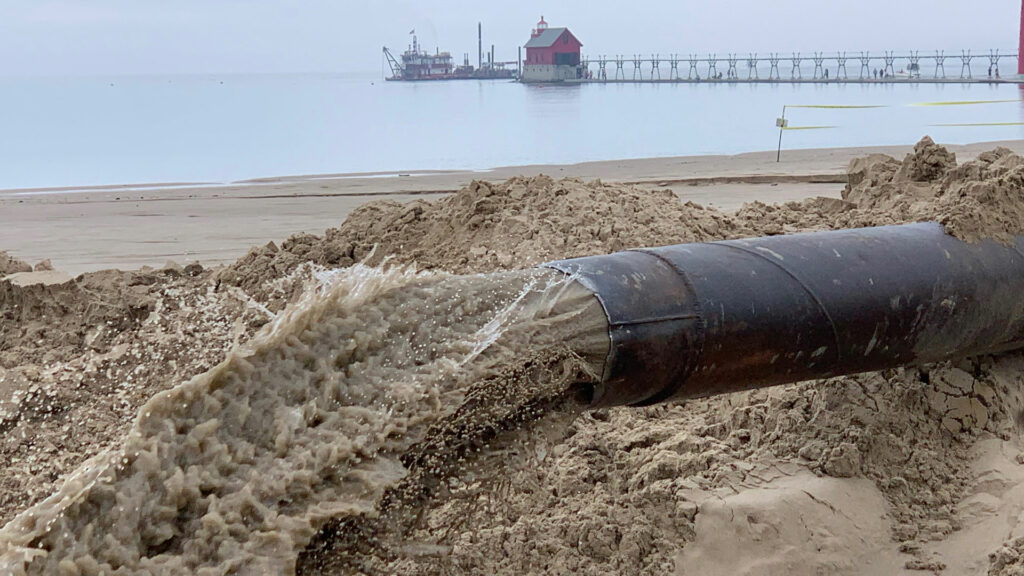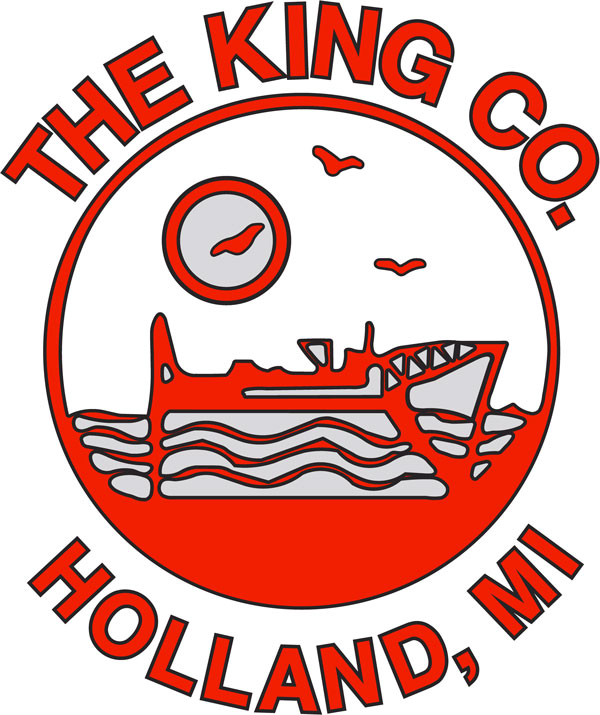We built our reputation by providing decades of skilled, reliable dredging with powerful, well-maintained equipment.
We dredge the Great Lakes and the inland river system of the Great Lakes states. We also dredge large inland lakes and large ponds in the Great Lakes states.
We dredge for the public and private sectors, including large dredging projects for the US Army Corps of Engineers, dock and pond cleaning for utility companies, and environmental shoreline dredging for residential properties.
We do a lot of maintenance dredging, maintaining waterways for the US government.
We’re capable of hydraulic and mechanical dredging.

What is Dredging?
Dredging is moving or removing sediment from the bottom of a body or channel of water, such as a lake or river.
Maintenance dredging is done to keep bodies of water as deep as necessary for vessels to navigate safely without running aground.
Hydraulic dredging uses pumps to moving sediment, whereas mechanical dredging uses buckets or grabs to move sediment.
Environmental dredging is done to improve a local environment by moving or removing sediment.
Dredging Benefits for the Great Lakes
“Is dredging good for the Great Lakes?” is one question we’re frequently asked. The answer is yes, for several reasons.
Dredging maintains proper depths in the waterways of the Great Lakes areas, so that ships can transport cargo needed by our businesses and homes.
Another benefit of dredging is that it removes pollutants that have settled to the bottom of the water, making the marine environment healthier.
It’s not only the body or channel of water being dredged that benefits; the areas of land where the sediments are moved to benefit as well. The US Army Corps of Engineers has outlined several uses for dredged sediments:
- Habitat development: sediment helps wetland, upland, aquatic, and island habitats.
- Beach nourishment: sediment stabilizes shorelines and controls erosion, protecting beachfront properties.
- Parks and recreation: sediment is useful in building and maintaining public and private parks and recreational areas.
- Strip mine reclamation: sediment is useful in reclaiming abandoned strip mine sites.
- Capping and protecting landfills: sediment serves to cap solid waste landfills, and to protect landfills.
- Bricks and hardened materials: sediment is an ingredient in manufacturing bricks and hardened materials such as road surfaces.
- Construction and industrial or commercial use: the availability of fill sediment near waterways aids nearby construction as well as industrial and commercial activities.
Have a dredging project in mind? Contact us today.

